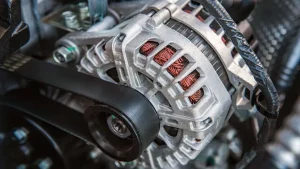When your vehicle suffers a minor ding or dent, it’s not just a cosmetic nuisance—it can also devalue your car. Maintaining your vehicle’s appearance is essential for pride in ownership and resale value. That’s where Paintless Dent Removal (PDR) comes into play. Far from the traditional body shop repair routes, PDR offers a non-intrusive, environmentally friendly alternative that is quickly gaining traction among car owners. It’s a skillful practice that can work with car detailing services, ensuring your vehicle continues to look the part and runs like a dream.
What is Paintless Dent Removal (PDR)?
Paintless Dent Removal (PDR) is a minimally invasive method for repairing minor dings and dents on a car’s body while preserving the original paint finish. PDR is gentler and more cost-effective than traditional techniques involving sanding, filling, and repainting. By maintaining the factory paint, PDR avoids mismatched colors and textures, saving time and money while preserving the vehicle’s resale value. Furthermore, PDR aligns with eco-friendly practices by eliminating toxic fillers or paints. For comprehensive automotive care, consider car detailing services Aurora CO, to ensure your vehicle receives the attention it deserves.
Why Opt for PDR Over Traditional Methods?
Choosing PDR over conventional repair methods can be beneficial for several reasons. Firstly, this approach can significantly lower costs since it requires fewer materials and less labor. PDR is a testament to efficiency—sparing owners from long waits associated with painting and curing times synonymous with traditional repairs. Moreover, skipping the repainting step means that the vehicle retains the integrity of its original paintwork, which is crucial for those who prize authenticity or plan to resell the car. In addition, PDR’s non-toxic nature means it avoids contributing harmful chemicals to the environment, making it a preferred method for the eco-conscious.
Training for PDR: The Blend of Technical and Artistic Skills
Not every technician can perform PDR—it requires a specific skill set. PDR technicians undergo rigorous training that teaches them the fine art of dent removal without damaging the paint. These experts need to learn how to carefully manipulate the metal from the underside of the panel back into place using specific equipment. This calls for a unique artistry and an understanding of automotive anatomy. This demands an understanding of car anatomy and an uncommon level of craftsmanship. Proper training ensures that technicians can handle various damage levels, adapting their techniques to the unique challenges each vehicle and dent may present.
The Intricacies of the PDR Process
PDR technicians start with a comprehensive damage assessment, often using a unique board that reflects lines onto the dent, making its depths and contours more visible. Once the extent of the damage is understood, they use precise push rods and picks to coax the metal back into its original form gently. This requires a systematic approach, patience, and a soft touch. It’s a remarkable process that restores the vehicle’s appearance without a trace of the repair, a result virtually impossible to achieve with traditional methods.
Debunking Common Myths About Dent Repair
Despite the increasing popularity of PDR, several myths continue to circulate. For instance, some believe that PDR can compromise the metal’s strength, but this is unfounded. PDR restores the metal to its original state; it doesn’t weaken it. Another misconception is that dents repaired with PDR are more likely to return. On the contrary, once a dent has been expertly repaired using PDR, the metal is as stable as it was pre-damaged. These facts underscore PDR’s reliability as a preferred dent repair method amongst informed vehicle owners.
Success Factors for PDR
Various factors influence the success of PDR treatment. The type and extent of damage, the car’s make and model, and the location of the dent all play a critical role. Different metals and paints respond distinctly to PDR techniques, with some combinations proving more amenable than others. A highly skilled technician can determine if PDR suits the repair and carry out the work to exacting standards. It’s this cautious and considered approach that ensures the longevity and effectiveness of PDR.
Post-PDR Car Maintenance
To ensure sustained results from PDR, ongoing maintenance is essential. This includes routine cleaning and waxing to protect the paintwork and caution when parking or leaving vehicles in environments prone to dings, like crowded parking lots or near errant shopping carts. Car owners may also visit recycled material-conscious car service providers to continue making choices that positively impact the vehicle’s longevity while minimizing their environmental footprint. After all, PDR is just the beginning of the journey toward responsible vehicle ownership and maintaining a car that continues to look its best for years to come.




